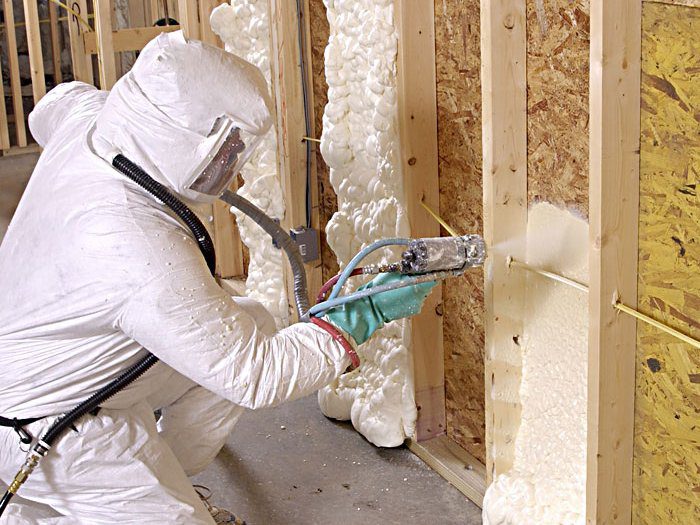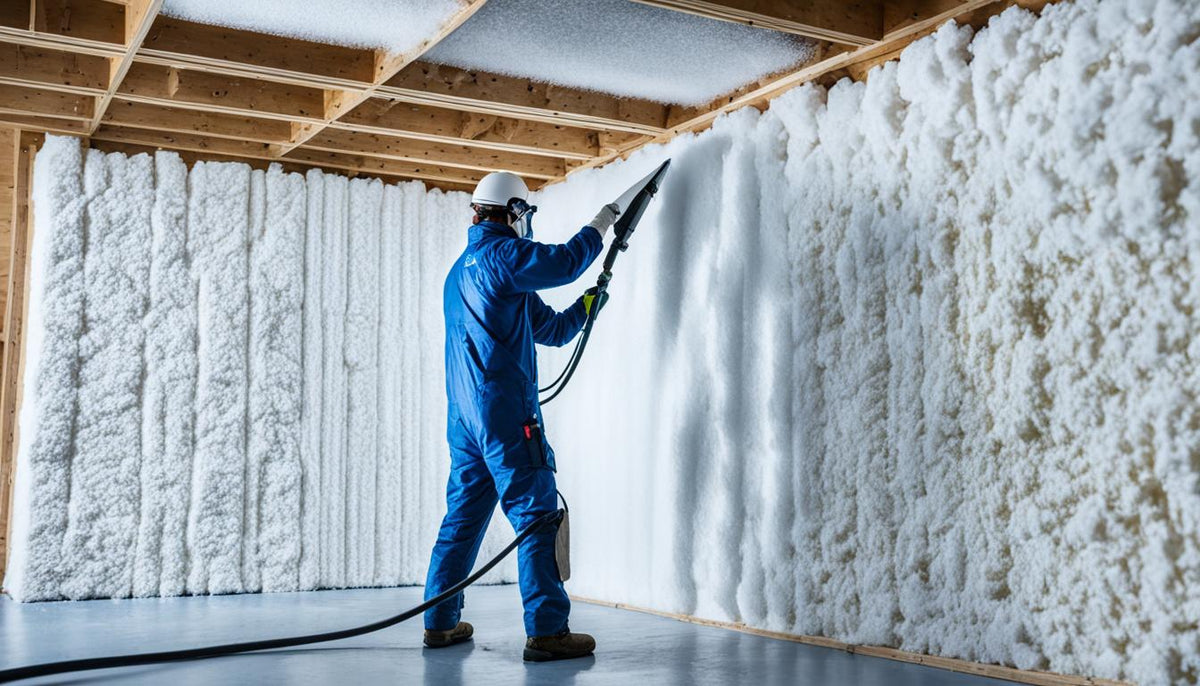Spray Foam: The Ultimate Remedy for Air Sealing and Insulation
Spray foam insulation has become a leading service for efficient air sealing and thermal insulation, providing an one-of-a-kind combination of properties that set it apart from standard methods. Its ability to broaden and fill spaces makes it particularly reliable in protecting against air leak, which can considerably impact energy performance. Nonetheless, comprehending the full scope of its benefits, installation procedures, and comparisons with other insulation kinds is important for making notified decisions. As we discover these aspects, the ramifications for both brand-new buildings and retrofits come to be increasingly substantial. What factors should affect your selection?
What Is Spray Foam?
Spray foam is a flexible insulation material that integrates the principles of air securing and thermal resistance to enhance power effectiveness in buildings. Made up largely of polyurethane or other similar compounds, spray foam is applied as a liquid that increases upon call with surfaces, producing a strong, continuous layer of insulation. This special residential or commercial property allows it to fill gaps, splits, and gaps that standard insulation materials might overlook, offering a remarkable air seal.
There are 2 primary kinds of spray foam: open-cell and closed-cell. Open-cell spray foam is lighter and a lot more flexible, supplying excellent sound absorption and a reduced R-value per inch - Spray Foam. On the other hand, closed-cell spray foam is denser, giving a higher R-value, moisture resistance, and added structural stability to developing components
The application process typically entails specific devices, ensuring a seamless application that abides by numerous substratums, consisting of metal, wood, and concrete. This versatility makes spray foam ideal for both new constructions and retrofitting existing structures. Its capacity to develop an impermeable barrier dramatically contributes to minimizing power consumption and boosting indoor air high quality, consequently making it a favored choice amongst builders and homeowners alike.
Benefits of Spray Foam Insulation
One of the most significant advantages of spray foam insulation is its remarkable ability to develop a constant air obstacle, which properly reduces power loss. Unlike traditional insulation products, spray foam increases to load spaces and splits, ensuring that air leak is drastically minimized. This characteristic not only improves energy efficiency but also brings about reduce utility expenses in time.
Furthermore, spray foam insulation offers exceptional thermal resistance, adding to a more stable interior atmosphere. Its high R-value per inch permits effective insulation in constrained spaces, making it ideal for attic rooms, wall surfaces, and crawl spaces. Additionally, the moisture-resistant residential properties of spray foam assistance prevent mold and mildew growth, advertising healthier living problems.
Another essential benefit of spray foam insulation is its sound-dampening high qualities (Spray Foam). It effectively lowers noise transmission in between rooms, developing a quieter and a lot more comfy home setting. The sturdiness of spray foam also sticks out, as it does not sag or clear up over time, keeping its efficiency throughout its life-span
How Spray Foam Functions
Understanding exactly how spray foam insulation functions is vital for valuing its effectiveness in air sealing and thermal resistance. Spray foam insulation is composed of 2 primary elements: isocyanate and polyol resin. When these elements are combined, they undergo a chain reaction that causes the material to broaden swiftly, creating a dense foam that loads spaces, fractures, and dental caries.
As the foam expands, it complies with surfaces, developing an impermeable seal that significantly decreases air infiltration. This particular makes spray foam insulation very effective at stopping drafts and dampness infiltration, which can bring about power loss and damages over time. In addition, the closed-cell variant imp source of spray foam uses remarkable thermal resistance due to its inflexible framework, successfully minimizing heat transfer.
The distinct buildings of spray foam permit it to adapt uneven surface areas, making certain comprehensive coverage and a seamless obstacle. Consequently, spray foam insulation not just improves energy efficiency but also adds to boosted interior air high quality by minimizing the build-up of pollutants and irritants. Eventually, comprehending the auto mechanics behind spray foam highlights its function as a remarkable selection for insulation and air securing in both business and domestic applications.
Installment Refine Summary

Before setup, the room must be sufficiently cleansed and prepped, ensuring that surfaces are complimentary from dirt, debris, and wetness. Due to the fact that impurities can compromise adhesion and overall performance, this step is vital. As soon as the location is prepared, the application entails blending the 2 parts of the spray foam, which increases why not look here upon call and loads voids properly.
Trained professionals should conduct the installation, using specific devices to make sure consistent protection and ideal thickness. Security safety measures, consisting of using protective gear and guaranteeing proper ventilation, are crucial throughout this procedure. After application, the foam commonly treatments swiftly, developing a solid obstacle that improves energy efficiency.
Comparing Spray Foam to Traditional Insulation
When evaluating insulation alternatives, spray foam insulation stands out in comparison to standard materials such as fiberglass and cellulose. Unlike fiberglass and cellulose, which can allow air seepage, spray foam expands upon application, loading spaces and holes to create a closed seal.
Furthermore, spray foam offers a greater R-value per inch than traditional insulation types, supplying more reliable thermal resistance in a thinner profile. This characteristic is specifically useful in spaces with restricted dental caries depth. Spray foam is immune to moisture and mold and mildew growth, which can be a considerable issue with cellulose and fiberglass, especially in humid atmospheres.
Nevertheless, spray foam insulation commonly carries a higher in advance price than its conventional counterparts. Home owners should evaluate this first financial investment against long-term energy cost sites savings and performance benefits. Inevitably, while both insulation kinds serve their purpose, spray foam emerges as an advanced option for contemporary insulation requirements, specifically in regards to air securing and thermal performance.

Final Thought
In summary, spray foam insulation represents a highly effective service for accomplishing optimal air sealing and thermal resistance. Its unique residential or commercial properties, including dampness resistance and sound dampening, make it ideal for various applications in both new building and constructions and retrofitting tasks (Spray Foam). Although the first expenses may be greater contrasted to standard insulation materials, the long-term advantages, such as substantial power savings and improved interior air high quality, justify the financial investment and highlight its value in modern-day structure methods.
Spray foam insulation has actually emerged as a leading option for effective air securing and thermal insulation, providing an unique mix of homes that establish it apart from traditional techniques.Spray foam is a functional insulation material that combines the concepts of air securing and thermal resistance to improve power efficiency in structures.When evaluating insulation alternatives, spray foam insulation stands out in comparison to standard products such as fiberglass and cellulose. Eventually, while both insulation kinds offer their purpose, spray foam arises as an extra advanced option for contemporary insulation demands, particularly in terms of air sealing and thermal effectiveness.
In recap, spray foam insulation represents an extremely efficient remedy for achieving ideal air sealing and thermal resistance.
Comments on “The Process of Using Spray Foam: What You Required to Know”